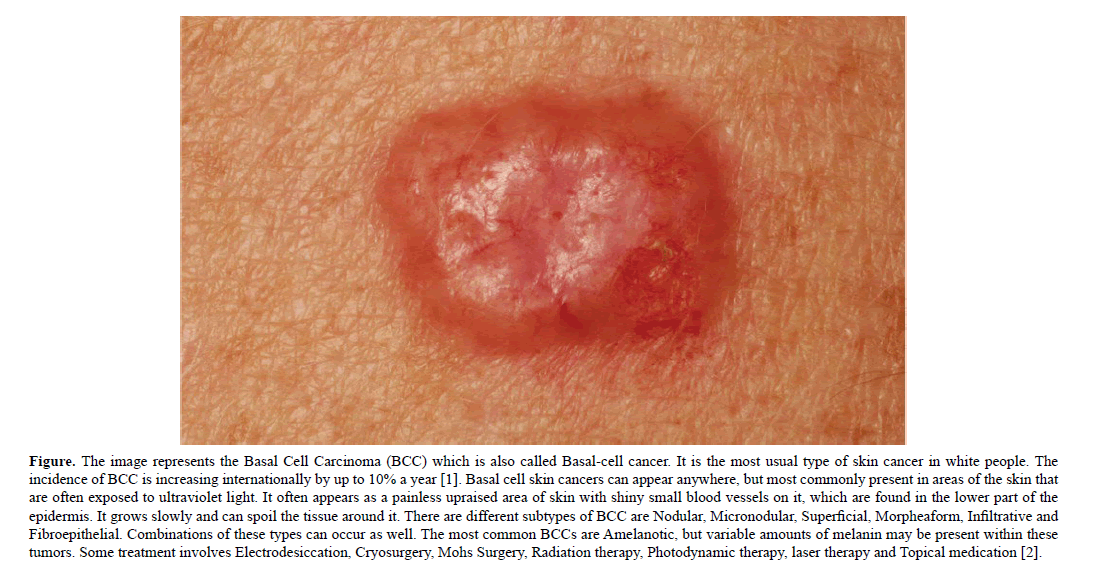ISSN : 2348-1927
Annals of Biological Sciences
Skin cancer: Introduction on Basal Cell Carcinoma
Gloria Hughes*
iMedPub, Green Lane, London, UK
Abstract
The image represents the Basal Cell Carcinoma (BCC) which is also called as Basal-cell cancer. It is most usual type of skin cancer in white people. The incidence of BCC is increasing internationally by up to 10% a year
Image
Figure 1: The image represents the Basal Cell Carcinoma (BCC) which is also called Basal-cell cancer. It is the most usual type of skin cancer in white people. The incidence of BCC is increasing internationally by up to 10% a year [1]. Basal cell skin cancers can appear anywhere, but most commonly present in areas of the skin that are often exposed to ultraviolet light. It often appears as a painless upraised area of skin with shiny small blood vessels on it, which are found in the lower part of the epidermis. It grows slowly and can spoil the tissue around it. There are different subtypes of BCC are Nodular, Micronodular, Superficial, Morpheaform, Infiltrative and Fibroepithelial. Combinations of these types can occur as well. The most common BCCs are Amelanotic, but variable amounts of melanin may be present within these tumors. Some treatment involves Electrodesiccation, Cryosurgery, Mohs Surgery, Radiation therapy, Photodynamic therapy, laser therapy and Topical medication [2].
References
- Wong CSM, Strange RC, Lear JT (2003) Basal cell carcinoma. BMJ 327: 794-798.
- https://www.skincancer.org/skin-cancer-information/basal-cell-carcinoma/bcc-treatment-options/
Open Access Journals
- Aquaculture & Veterinary Science
- Chemistry & Chemical Sciences
- Clinical Sciences
- Engineering
- General Science
- Genetics & Molecular Biology
- Health Care & Nursing
- Immunology & Microbiology
- Materials Science
- Mathematics & Physics
- Medical Sciences
- Neurology & Psychiatry
- Oncology & Cancer Science
- Pharmaceutical Sciences

